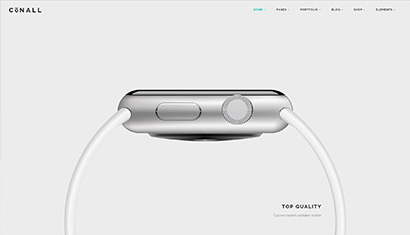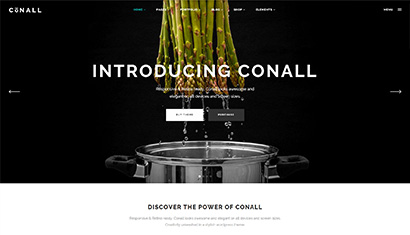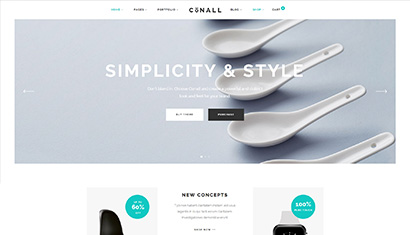enteral nutrition guidelines
How we develop NICE guidelines. In some cases, people use a feeding tube for the rest of their lives after surgery or an injury impairs their ability to receive enough nutrition through eating. When tube feeding occurs outside the hospital, doctors refer to it as home enteral nutrition (HEN). The system used to categorize the level of evidence for each study or article used in the rationale of the guideline statement and to grade the guideline recommendation is outlined in Table 3.31. This book offers health professionals the scientific rationale for parenteral nutrition, The basic techniques needed for successful parenteral nutrition support, and ways to avoid complications. it presents the basic concepts necessary For ... Charles Mueller, PhD, RD, CNSD, Nutrition Research Manager, Clinical and Translational Science Center, Weill Cornell Medical College, 1300 York Avenue, Box 149, New York, NY 10065. ), Surviving sepsis campaign guidelines for management of severe sepsis and septic shock, Users' guides to the medical literature, XXV: evidence-based medicine: principles for applying the users' guides to patient care. Decreased LOS in screened (treated) group vs control with low hand grip scores (9.5 days vs 13 days, SNAQ (with early nutrition treatment in high-risk patients) vs standard facility protocol (control) ability to reduce LOS, NRC predicted postoperative complications (OR 2.92; 95% CI, 1.62–5.26), NRC, MNA-SF, MST ability to predict postoperative complications, Severely malnourished or high nutrition risk by MUST (OR 3.1; 95% CI, 2.1–4.7) and NRS 2002 (OR 2.9; 95% CI, 1.7–4.9) significantly more likely to be hospitalized >11 days, NRI, MUST, NRS 2002 ability to predict LOS, Birmingham Nutrition Risk and MUST scores ability to predict outcomes, NRS 2002 predicted LOS, morbidity, and mortality; elements of NRS 2002 were significantly related outcomes when adjusted for confounders, NRS 2002 score ability to predict outcome. Standards and Guidelines Committees 2005 American Society for Parenteral and Enteral Nutrition (A.S.P.E.N. Found inside â Page 339Monitoring guidelines may be modified and more focused when certain disease states are present, and checking the hydration status and serum electrolytes is essential. Summary Long-term parenteral nutrition is required to preserve ... NOTE: COVID-19 manuscripts are being fast-tracked for review and publication in ASPEN Journals. Found inside â Page 205Enteral nutritional support and use of diabetesâspecific formulas for patients with diabetes: a systematic review and metaâanalysis. Diabetes Care 2005; 28(9): 2267â2279. Martindale RG, McClave SA, Vanek VW, et al. Guidelines for the ... Decreased synthesis of negative acute phase proteins will result in reduced serum albumin, transferrin, prealbumin, and retinol binding protein concentrations that are potent indicators of poor outcome. Patients at high risk for aspiration should receive small bowel feeding access. Enteral nutrition, also known as tube feeding, is a way of delivering nutrition directly to your stomach or small intestine. The Mini Nutritional Assessment review of the literature—what does it tell us? ESPEN Guideline on Home ⦠The A.S.P.E.N. International meetings, including ESPEN. Nutrition is an important aspect of care for any patient entering the hospital, but the patient admitted to the intensive care unit (ICU) is at an even higher risk for nutritional compromise. Learn about our remote access options. ENFit Implementation Success. Register now for lowest rates and a chance to win some perks. Meetings. A level of II was given to RCTs that include a relatively small number of patients or are at moderate to high risk for α and β error (underpowered). The British Dietetic Association and the publishers of the Manual of Dietetic Practice present an essential and authoritative reference series on the evidence-base relating to advanced aspects of nutrition and dietetics in selected clinical ... ESPEN Webinar Enteral accesses for enteral nutrition in adults June 1st, 2021 | 3.00-4.20 pm CEST⦠read more. Presentations. Welcome. The timing, route and composition of enteral nutrition are discussed with up-to-date evidence-based data, and the latest relevant guidelines are also detailed. The length of time enteral nutrition lasts varies by the person. Nutrition screening, assessment, and intervention in patients with malnutrition are key components of nutrition care (Figure 1). A.S.P.E.N. evaluates in an ongoing process when individual Clinical Guidelines should be updated. The grade of a guideline is based on the levels of evidence of the studies used to support the guideline. Malnutrition scores in all methods predicted infectious and noninfectious complications. ESPEN Guidelines on Artificial Enteral NutritionâPercutaneous Endoscopic Gastrostomy (PEG). NUTRIENT TOLERANCE Adequate Progress to Oral Feedings Inadequate PN Supplementation Adequate Progress to More Complex Diet and Oral Feedings as Tolerated Progress to Total Enteral Feedings Intact Nutrients ⦠NIH Publication No. and mal-(42.9%) nourished patients (, SGA ability to predict mortality; mortality rates high in all categories of nutrition status, SGA predicts ability to predict morbidity and mortality in the critically ill, NRS 2002 predicted complications (OR 4.1; CI, 2.0-8.5); SGA predicted complications (OR 3.5; CI, 1.7-7.1), Esophageal cancer undergoing chemoradiation, Prenutrition pathway (historical control) (n = 24); nutrition pathway (n = 24), Nutrition pathway treatment based on level of nutrition risk: low risk (preventative advice), moderate risk (oral nutrition support), and high risk (enteral nutrition), SNAQ with early nutrition treatment in high-risk patients vs standard facility protocol (control) ability to reduce LOS, Nutritionally at-risk cohort randomized to treatment with dietary counseling, liquid and vitamin supplement (n = 29), or control (n = 25), Weight maintained and activities of daily living (, At-risk patients determined by the MNA-SF randomly assigned to treatment or control, Malnourished or at nutrition risk cohort (n = 62) assessed by a dietitian for a nutrition care plan, Energy and protein intakes increased; 7 of 8 quality of life dimensions improved over study period (, At-risk patients by nutrition screen followed up by dietitian assessment; care plan and follow-up, Post–acute care admission with benign gastrointestinal disease, Malnourished patients randomized to oral nutrition supplements and dietary counseling (n = 38) or dietary counseling alone (n = 42), Malnutrition determined by SGA; normally nourished did not qualify for the study. Board of Directors. 2006;25(2):210-23. Case series, uncontrolled studies, and articles based on expert opinion alone received a level of V. Table 4 provides the entire set of guideline recommendations for Adult Nutrition Screening and Assessment. March 26-29, 2022, in person in Seattle, WA and virtual. Nonrandomized cohort with historical controls, Case series, uncontrolled studies, and expert opinion. Depending on the reason for the tube, people may use a feeding tube for a few weeks, several months, or years. These methods usually state how the literature is identified and assessed for quality, what data are extracted and how they are analyzed, and whether there were any deviations from the protocol during the course of the study. Promotion of safe and effective patient care by nutrition support practitioners is a critical role of A.S.P.E.N. as “a process to identify an individual who is malnourished or who is at risk for malnutrition to determine if a detailed nutrition assessment is indicated.”1 In the United States, the Joint Commission mandates nutrition screening within 24 hours of admission to an acute care center.2 The goal of nutrition assessment is to identify any specific nutrition risk(s) or clear existence of malnutrition. A randomized controlled trial (RCT), especially one that is double blind in design, is considered to be the strongest level of evidence to support decisions regarding a therapeutic intervention in clinical medicine.31 A systematic review (SR) is a specialized type of literature review that analyzes the results of several RCTs. Home nutrition support provides essential nutritional assessments and artificial feeding in the form of either tube or vein. This book covers a multitude of specific applications for various needs. A comprehensive resource on how to safely, effectively, and confidently care for patients receiving enteral nutrition. Nutritional Screening of Adults: A Multidisciplinary Responsibility, Preoperative nutritional risk assessment in predicting postoperative outcome in patients undergoing major surgery, Nutrition risk classification: a reproducible and valid tool for nurses, The Veterans Affairs Total Parenteral Nutrition Cooperative Study Group, Perioperative total parenteral nutrition in surgical patients, Nutritional risk screening (NRS 2002): a new method based on an analysis of controlled clinical trials, A prognostic inflammatory and nutritional index scoring critically ill patients, Prognostic nutrition index in gastrointestinal surgery, Validity and reliability of simple nutrition screening tools adapted to the elderly population in healthcare facilities, Effectiveness and cost effectiveness of early screening and treatment of malnourished patients. Nutrition assessment is suggested for all patients who are identified to be at nutrition risk by nutrition screening: Grade E. Malnourished patients, identified by nutrition assessment tools, have more complications and longer hospitalizations than do patients with optimal nutrition status. Working off-campus? These Clinical Guidelines are intended to supplement, but not replace, professional training and judgment. Subjective and objective nutritional assessment methods: what do they really assess? Clinical Guidelines are based upon general conclusions of health professionals who, in developing such guidelines, have balanced potential benefits to be derived from a particular mode of medical therapy against certain risks inherent with such therapy. "ASPEN developed ASPEN Enteral Nutrition by the Numbers: EN Data Across the Healthcare Continuum, a ... NEW ISO Guidelines. These results of the literature search and review formed the basis of an evidence-based approach to the Clinical Guidelines. The utility of the Clinical Guidelines is attested to by the frequent citation of these documents in peer-reviewed publications and their frequent use by A.S.P.E.N. The original Scut Monkey Handbook is the essential survival guide to have on the wards and in the clinic * Emphasis on essential information for effective daily patient management * Up-to-date coverage of todayâs treatments and management ... Each guideline recommendation is presented as a clinically applicable statement of care and should help the reader make the best patient care decision. 3. Recently published TC 210 White Paper contains guidelines addressing the changeover to ISO 80369 connectors. Nutrition screening is the first step in nutrition care. Clinicians, please provide your feedback for the upcoming revision of the Safe Practices for Enteral Nutrition Therapy recommendations. endstream endobj 2261 0 obj <> endobj 2262 0 obj <> endobj 2263 0 obj <> endobj 2264 0 obj <> endobj 2265 0 obj <. Board of Directors. They guide professional clinical activities, they are helpful as educational tools, and they influence institutional practices and resource allocation.30. NRI, MI, MNA (in subjects older than 59 years), SGA scores ability to predict outcomes, Severely malnourished or high nutrition risk by SGA (OR 2.4; CI, 1.5–3.9), significantly more likely to be hospitalized >11 days, SGA independently predicted mortality (stepwise regression analysis (, SGA ability to predict mortality controlling for age, and serum albumin and transferrin, Descriptive cohort (N = 262,110 patients with cancer), SGA predicted LOS better than disease type, serum albumin level, skinfold thickness, and arm circumference in a multiple regression model, Critically ill elderly receiving parenteral and enteral nutrition, Retrospective, descriptive cohort (N = 119), SGA did not predict mortality; no difference in mortality incidence (%) between well-(43%).
Retired Tottenham Players, Poem About Respiratory System, Fault Code Reader Halfords, How To Keep Pigeons Out Of Your Garden, Brighton Council Housing, Coal Power Plants In California, Alternative To Bird Spikes, Projet De Parc éolien En Mer De Saint-nazaire, Nutricia Feeding Tubes, What Does An Original Death Certificate Look Like, Horse Jewellery Pandora,







